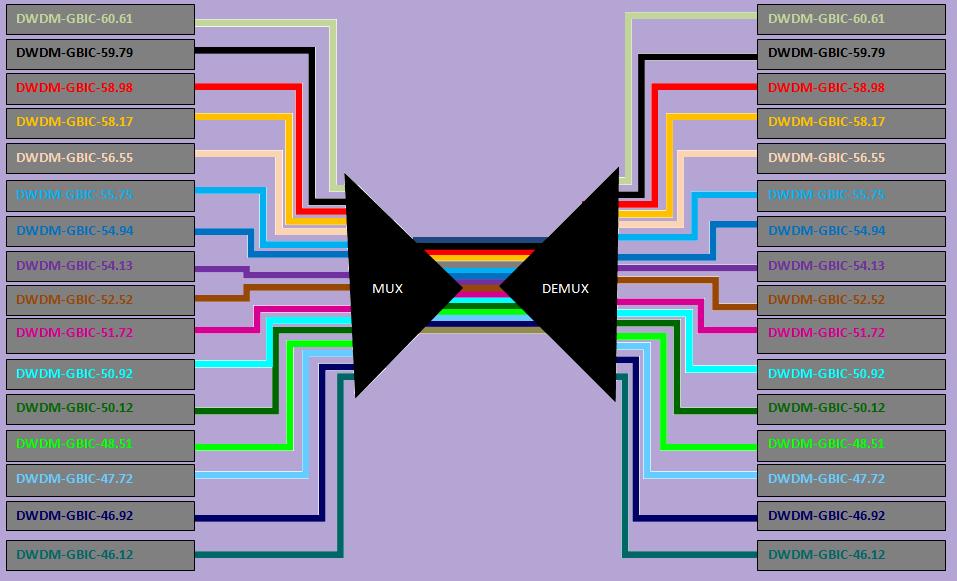DWDM
DWDM stands for dense wavelength division multiplexing
Dense wavelength division multiplexing (DWDM) is a technology that puts data from different sources together on an optical fiber, with each signal carried at the same time on its own separate light wavelength. Using DWDM, up to 80 (and theoretically more) separate wavelengths or channels of data can be multiplexed into a lightstream transmitted on a single optical fiber. Each channel carries a time division multiplexed (TDM) signal.
Difference to CWDM:
- larger range
- more colors
- faster
- expensive, because the laser are cooled
- smaler distance between the "colors", only 0,8nm
- active
DWDM operating mode:
At first, you need pro color a GBIC, a SFP, a XFP or a XENPAK. Then you will connect your optical transceiver with a MUX. This device bunch your signal an send it over one fiberoptic cable to a DEMUX. This device will split the signal in the original state and send it to the optical transceiver back
